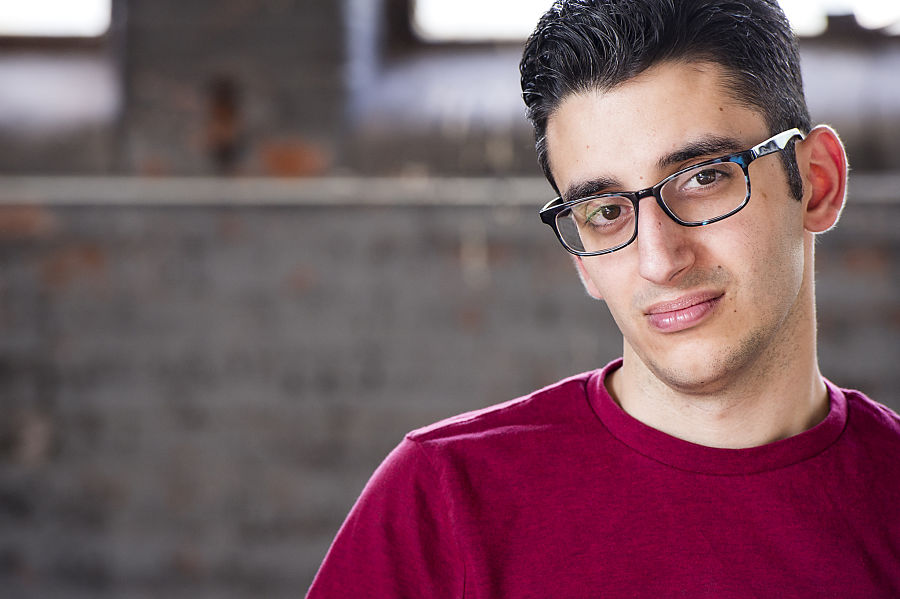Everybody loves a talkback. I’m kidding, many friends and colleagues dread talkbacks. But I’ve been to a lot of talkbacks. And panels. Conversations about disability in the arts, particularly in the theatrical space. I think these conversations are important, but it’s no secret that they’re not always tied to results. Institutions like to gather disabled artists and practitioners once in a while, often in a publicized setting, to talk about what could and should be done to broaden inclusion. But this is also a mechanism for the institutions to pat themselves on the back, check their “disability” box for the year, and move on to the next diversity topic.
The conversations that are most successful are the ones organized, curated, and led by disabled people. I find these convenings empowering because we know we’re not being used as accessories. Our experiences are truly centered, people are actively listening to us, and concrete actions follow. Some of those recent actions have included; Gregg Mozgala’s Apothetae and Lark Playwriting Fellowship, Queens Theatre’s actor training initiative Theatre for All, and the rigorous work and community-building Simi Linton and Kevin Gotkin spearheaded via Disability/Arts/NYC (DANT). Simi, Kevin, and DANT made sure we got a slice of the pie in New York City’s cultural plan, resulting, in part, in the Disability Forward Fund.
I got most of my early professional acting jobs thanks to Inclusion in the Arts, an organization that closed in 2018. Staff members Christine Bruno and David Harrell, both actors and advocates, amplified disabled projects and stories, connecting producers and casting directors with disabled talent. I’m grateful to Christine and David for their many referrals, which allowed me to audition and book work in the years before I had an agent or manager. But in order for a vast and varied group of disabled artists to establish and maintain their individual careers onstage and off-, it takes a consistent stream of available opportunities, which means actively integrating disability into the projects that are generated and produced.
As we know, theatre is on pause right now, but we don’t have to pause the work that has been going on for decades to carve out a space for disability in the American theatre. I’d like to direct my attention to the administrative leaders now, the artistic directors, producers, literary directors and managers, dramaturgs, casting directors—anyone who has the power to say “yes” and to employ people. As you use this moment to consider how you want to recalibrate your institution on the other side of this pandemic, I urge you to make sure disability is an integral part of the stories you choose to tell.
Sometimes I’m sitting in a theatre watching a play and a disabled character appears unexpectedly. Most often these characters are peripheral, especially if I don’t know about the disability going in. And then something offensive happens. I cringe. It’s awful. I wonder, “Why is this happening at a major theatrical institution? Why didn’t anybody with power stop this from happening? Why did the (invariably non-disabled) writer think this was okay?”

You see, the disabled character is not there to be a fully realized person. To this established, lauded, can-do-no-wrong author, disability is merely an idea or concept. The character is there to fulfill a trope. The presence of disability acts as a symbol or metaphor to illuminate the grand ideas of the play, and the true spotlight remains on the non-disabled characters. This does not earn your theatre points on the disability scorecard! I’m not championing censorship; I am championing intentionality. Discouraging laziness. And yes, I’m being purposely vague, but you know this happened multiple times in New York in very recent years.
We are tired of being tertiary. Here is a partial list of ways to center disabled artists and audiences going forward:
- Program work by disabled playwrights.
- Program work prominently featuring disabled characters.
- Even if a character is not explicitly identified as disabled, but the action of the play or context of the story suggests that they might be, please stop and ask yourself, “Wait, is this actually a disabled character?” Sometimes the answer is yes. Make subsequent creative decisions accordingly.
- Cast disabled actors to play disabled characters. I mean, of course. But I had to say it! Hollywood is still guilty, and some theatre is too.
- Cast disabled actors to play characters not written to be disabled. This works well for new plays and musicals where there is no blueprint. This also works well for revivals where the blueprint can be eviscerated. So basically all plays and musicals.
- If you programmed a play that featured disability five seasons ago, or four or three or two seasons ago, that is not enough. It’s irresponsible to virtually ignore an entire community for years at a time, and you can’t use one positive example from the past to justify the absence of inclusion in the present or future. Consistency is crucial. You have to keep searching for the projects, stories, and talent that will bring disability to your stages.
- A piece of theatre can still represent disability without being about disability.
- Hire disabled directors and choreographers.
- Hire disabled designers and technicians.
- If your scenic design process begins prior to your casting process, ask if the accessibility of your design concept excludes performers with certain mobility disabilities from being in your play or musical. If the concept is exclusionary, consider a more universally designed approach.
- Hire disabled stage managers. Disabled people are great at problem-solving because we have to constantly adapt in a world that is not built for us.
- Hire disabled front-of-house, box-office, and full-time administrative staff.
- If you require a disability consultant, hire one. It is not every disabled person’s job to act as a disability consultant, particularly if they are not being compensated for that role.
- Do better than the minimum when it comes to audience accessibility.
That last one is big, so I’m going to expand on it. I’ve gone through my own learning process about this. I have cerebral palsy and walk with a walker, which means I experience disability from a mobility perspective. When I think about audience access, the first things that come to mind are wheelchair spaces and aisle mobility seats (preferably near the front, not the back), elevators, ADA-accessible bathrooms, and accessible transportation options near a given venue. Please, please be wheelchair accessible. My personal policy as a playwright is that if a space is not wheelchair accessible, I won’t allow my work to be produced or presented there. I’m less strict about acting jobs, but if I am the creator of the work, I can’t justify barriers like stairs preventing mobility-disabled audiences from experiencing the stories I wrote for them.
But accessibility is about so much more than mobility. I’m grateful to actress Jessy Yates, dancer and choreographer Alice Shepherd of Kinetic Light, producer and audience architect Lisa Niedermeyer, performer and advocate Alejandra Ospina, dancer and choreographer; Jerron Herman, and visual artist, and curator Ezra Benus for educating me and deepening my understanding of this issue.
Audience accessibility includes but is not limited to:
- Audio description and large-print playbills for blind and low-vision patrons.
- Captioning (preferably open caption) and sign language interpretation for d/Deaf and hard of hearing patrons. These DO NOT cancel each other out. They are different services and different people need different things, so please plan to offer both, along with assistive listening devices.
- Relaxed performances for autistic and neurodiverse patrons.
You may already be familiar with these forms of accessibility, and perhaps you implement them on specific dates during each of your productions. And here is where I repeat: Do better than the minimum. If your general practice is to allot one performance per run for each of these services, double that. Double whatever is your minimum. Or triple. I recognize that these services cost money each time they are utilized, and we will be in a place of limited means in a post-COVID theatre landscape. But please make these line items a priority in your budgets. The more options and flexibility d/Deaf and disabled patrons are given, the more they will attend your shows.
Some institutions do not offer these services regularly. Instead they require patrons to request them in advance. I see this primarily as a cost-saving measure to ensure the services don’t go un-utilized. No, no. Best practice is to lead with inclusion, lead with accessibility. Tell d/Deaf and disabled patrons that they are welcome—in your marketing and publicity materials, social media posts, advertisements, press releases, season announcements, and performance calendars. This says, “We have made space for you. We want you to be here.” Do targeted outreach. Send direct invitations to d/Deaf and disability organizations. And don’t just do this when a show is about or “for” d/Deaf and disabled patrons. Do it for every show. All the time.
Some final thoughts while I have this platform:
Please don’t call us “inspiring.” Enough people do that in every corner of society. We are conditioned to believe that our only true value is the inspiration we provide others. The notion is that our disabled lives make non-disabled people feel better about themselves and their lives. Please see the late Stella Young’s TEDx Talk on inspiration porn. It’s one thing to be inspired by someone’s achievements and amazingness; it’s another to be inspired by their existence. People think I’m inspiring for walking into the grocery store. I’m just buying asparagus, darling. Nothing groundbreaking about it. Even if “inspiring” is meant in the absolute best way, the lines are so blurry and the word is so overused that I become exhausted any time someone says it to me. Do I explain it to them? Or do I just smile, say thank you, and walk away?
Except that one time I was happy someone called me inspiring. That someone was a young actor named Sebastian Ortiz. He also has cerebral palsy and walks with a posterior walker like mine. He’d just seen my cabaret at Joe’s Pub in New York, and as we talked in the lobby afterward, he said, “You inspired me!” He was 7. My heart exploded. Yes. Of course. I want to inspire kids like Sebastian through the work that I do.
He may have seen me at Joe’s Pub, but a few weeks earlier, I saw Sebastian on a Broadway stage. Watching Sebastian perform was also the first time I had ever seen a walker like mine on a Broadway stage. I was 27. I’d dreamt of being on Broadway all my life, yet throughout my adolescence I was made to believe that wasn’t possible for someone like me. And there was Sebastian, someone like me, showing me the truth. Our inspiration was reciprocal.
Representation matters. That phrase is thrown around almost as often as the word “inspiring.” But it’s completely accurate. A giant, visceral wave of emotion overtook me as I watched Sebastian, after a lifetime of not seeing myself onstage. It was palpable and powerful. And you have the power to make more of that happen.
Let us tell our stories. Tell us our stories matter. And tell us that we matter, too.
Ryan J. Haddad is an actor, playwright, autobiographical performer, and Long Wharf Theatre artistic ensemble member with cerebral palsy who can be seen on Season 2 of the Netflix series The Politician. This piece initially appeared on Long Wharf’s site.


